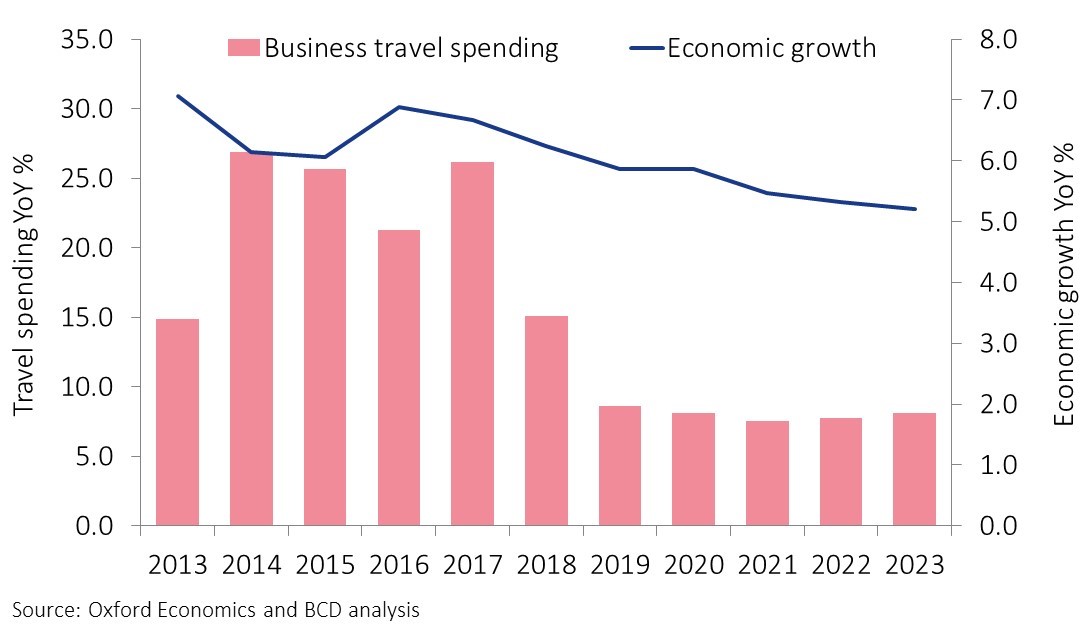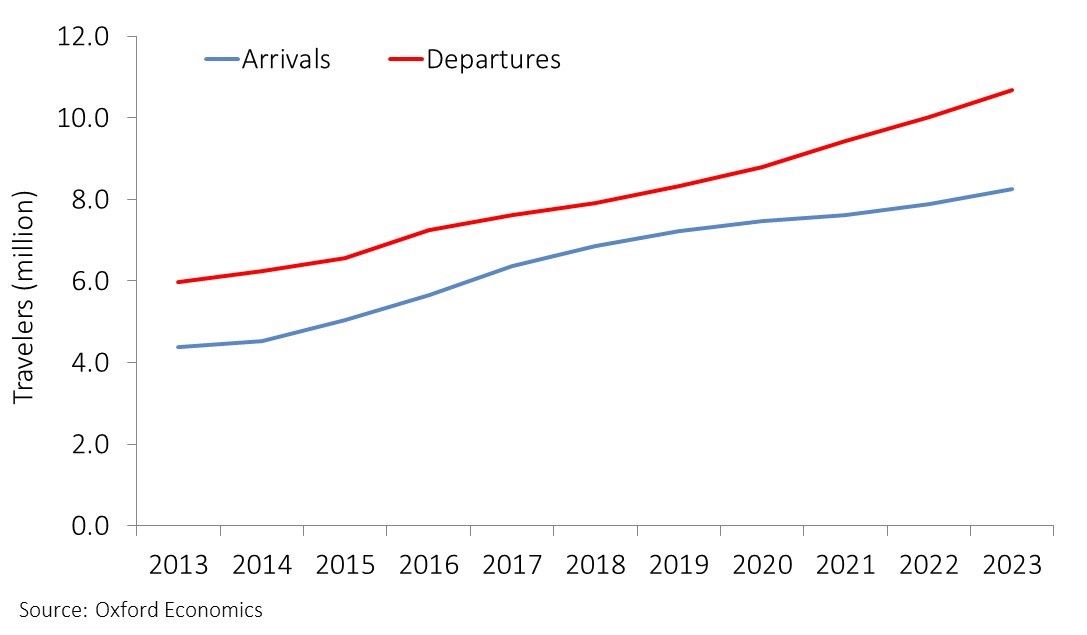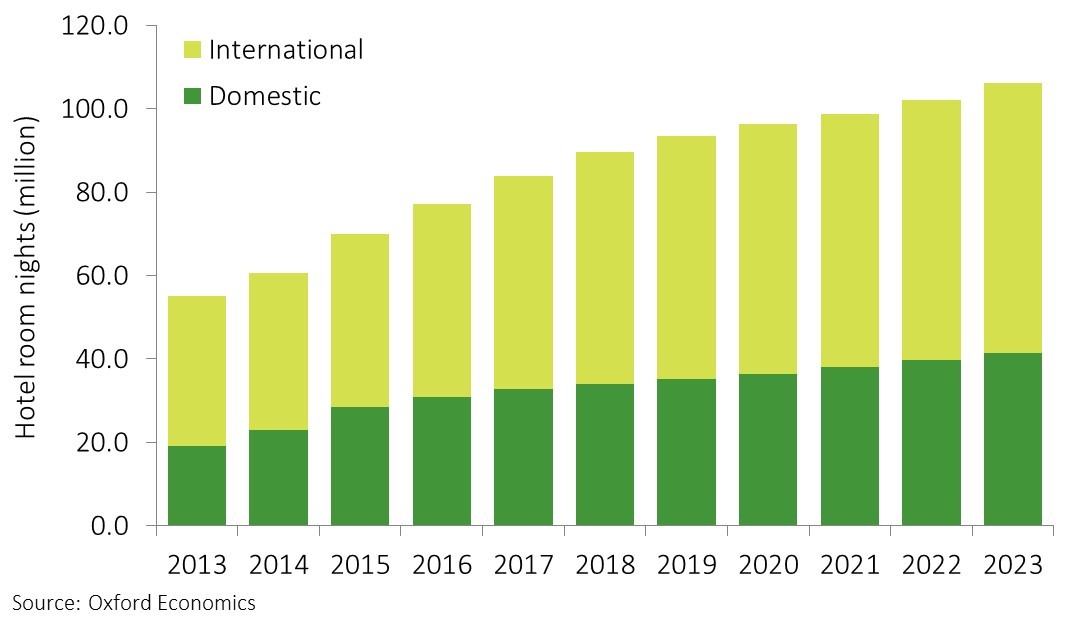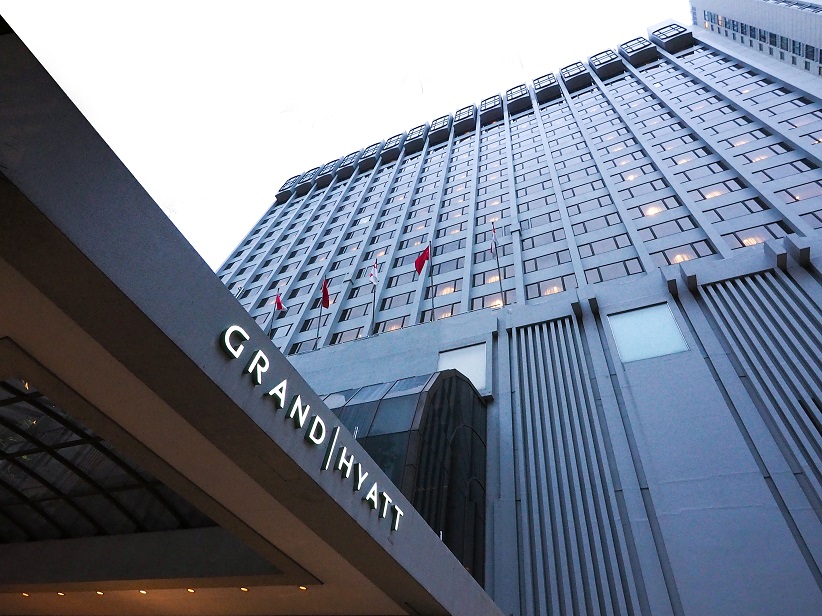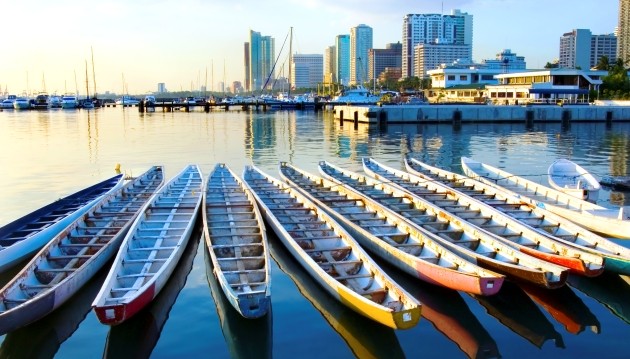
In-country business trips and domestic spending dominate trends
Companies spent more than US$23 billion on corporate travel in the Philippines in 2018 with domestic business trips accounting for almost all spending. Between 2013 and 2018, spending grew 23% per year, on average. Growth is expected to slow to 8% a year through 2023.
Ask how BCD Travel can help you get travelers to emerging and established markets all over the world.
Economic environment
Economic growth and business travel spending
Click on image to enlarge
- The Philippines has one of Asia’s most robust economies. The nation averaged annual economic growth of 6.3% between 2010 and 2018. Expansion was 6.2% in 2018 and is expected to slip to 5.9% this year.
- Being less reliant on global trade has shielded the Philippines from recent downturns, but it’s not immune to external factors. The uncertainty in global markets has weighed on business sentiment and investment.
- Net exports are slowing while imports grow. But public spending, such as the government’s “Build, Build, Build” infrastructure program, is supporting employment with knock-on benefits for consumer spending.
- Consumer spending also is getting a boost from healthy growth in remittances and slowing inflation.
Air
International travel
Click on image to enlarge
- From 2013 through 2018, international travel to and from the Philippines increased an average of 7.4% a year. Through 2023, growth is expected to be just 5.1% annually, due to a drop in arrivals. Departures should continue to increase roughly 6% per year.
- About a quarter of visitors making overnight trips to the Philippines arrive from South Korea. With a 16% share of arrivals, the U.S. is the second-largest inbound market. By 2023, China will claim second place with anticipated growth averaging 6% a year.
- China and Hong Kong are the top two destinations for Filipinos traveling abroad, together accounting for 25% of outbound travel.
- Low-cost carrier Cebu Pacific Air leads the market, operating 37% of scheduled flights from the Philippines’ 11 largest airports.
- Full-service airline Philippine Airlines (PAL) is No. 2 with a 30% share. A strategic investment from Japan’s ANA may secure its future.
- Both airlines are feeling competitive pressure from the expansion of low-cost carrier Philippines AirAsia.
Accommodation
Hotel demand
Click on image to enlarge
- Hotel room nights in the Philippines jumped 62% between 2013 and 2018—expanding, on average, by 10% per year.
- Growth is forecast to average just 3.5% annually through 2023, with a 4% rise in domestic and a 3% rise in international demand.
- Robinsons Hotels & Resorts and Wyndham compete to offer the most chain hotels. Both companies concentrate on economy and midscale service tiers. The third-largest chain, Red Planet Hotels, focuses on the lower end of the market.
- Travelers looking for chains offering higher service levels should consider Ascott, Accor and Shangri-La Hotels.
